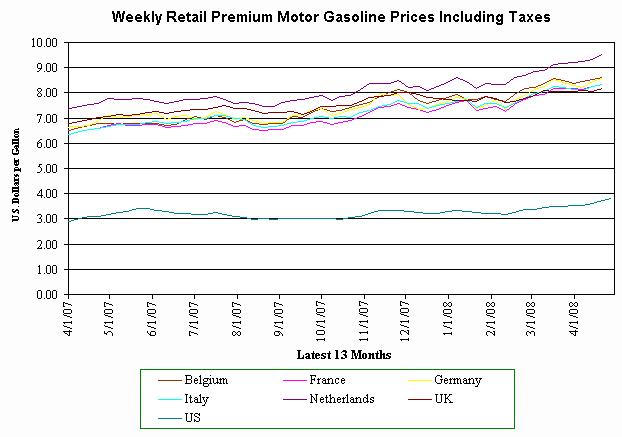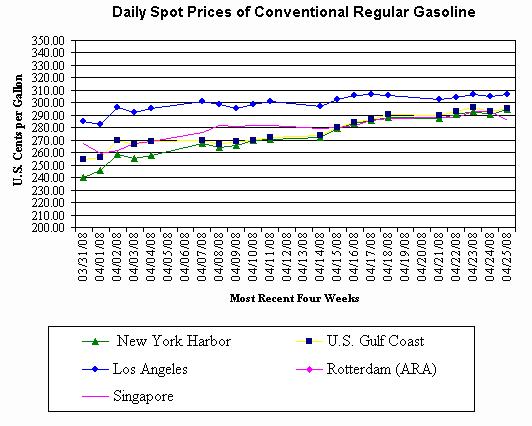Cognitive Dissonance
As a follow-up to this post on gas-price demagoguery, I would like to observe that the very same people who are most likely to demagogue about high gas prices in this country are the very same ones who advocate that the US adopt European-style taxation levels, regulatory policy, and CO2 targets, the results of which can be seen here:
If you can't read the colors on the scale well, I think you can guess which is the US price line and which are the European gas prices. Source here. Just to be clear, this has nothing to do with wholesale gasoline prices, which are substantially similar between the US and Europe:
Since the difference in price does not go to the producer, I will leave it as an exercise to guess where the extra $5 per gallon is going (hint: Uncle Francois) The cognitive dissonance required to call for 80% CO2 reductions while simultaneously decrying $3.50 gas prices is just stunning to me.
Update: From the same source, here are the gas prices in dollars per US gallon EXCLUDING taxes:
| Date | Belgium | France | Germany | Italy | Nthrlnds | UK | US |
| 4/14/2008 | 3.32 | 3.28 | 3.18 | 3.61 | 3.85 | 3.09 | 3.21 |
Update #2: More here on Hillary's sleight of hand. And this from Robert Samuelson, at how this cognitive dissonance extends to exploration limits:
We could be producing more, but Congress has put large areas of
potential supply off-limits. These include the Atlantic and Pacific
coasts and parts of Alaska and the Gulf of Mexico.
By government estimates, these areas may contain 25 billion to 30
billion barrels of oil (against about 30 billion barrels of proven U.S.
reserves today) and 80 trillion cubic feet or more of natural gas
(compared with about 200 tcf of proven reserves).What keeps these areas closed are exaggerated environmental fears,
strong prejudice against oil companies and sheer stupidity. Americans
favor both "energy independence" and cheap fuel. They deplore imports
-- who wants to pay foreigners? -- but oppose more production in the
United States. Got it? The result is a "no-pain energy agenda that
sounds appealing but has no basis in reality," writes Robert Bryce in
"Gusher of Lies: The Dangerous Delusions of 'Energy Independence.' "

